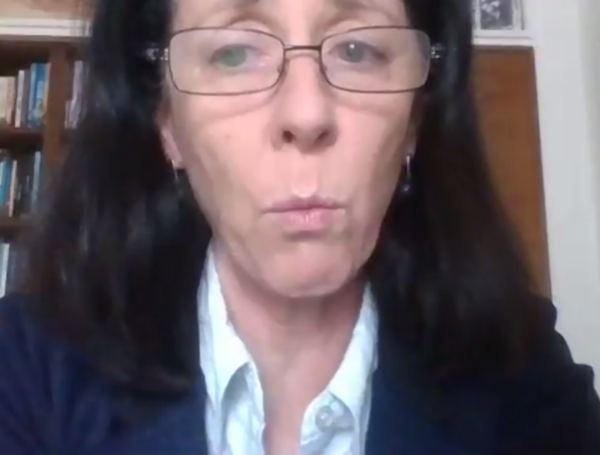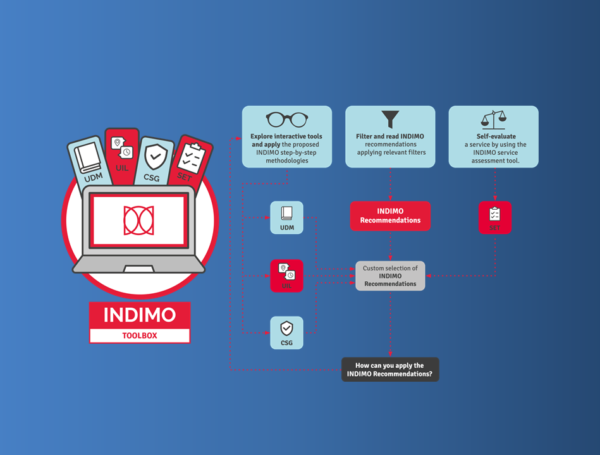by Pasquale Cancellara, POLIS Network
On 11th March 2021 INDIMO held its first public event titled “What do users want? A reality check on needs, capabilities, and constraints towards inclusive digital mobility services”. The purpose of the event was to shed light on the results collected in the first year of the project, focusing on the investigation of preferences, perceived barriers, and needs of vulnerable users when they use digital mobility services and applications.
To be truly sustainable digital urban mobility options must be accessible for a broad range of users. To tackle this critical concern, the INDIMO project puts the needs of vulnerable transport users at the center of its action. By adopting an approach based on the principles of co-creation and on the structured cooperation of users, developers, operators, and policymakers, the project seeks to extend the benefits of digital mobility solutions to everyone.
Opening session
Eighty-one (81) people connected to the event, which was moderated by Imre Keserü, the coordinator of the INDIMO project (VUB) who outlined the project objectives, emphasizing that the COVID-19 crisis has demonstrated how important digital technologies are for the mobility of people, for example to purchase or book tickets contactless.
At the same time, he warned that relying solely on digital technologies can also lead to the exclusion of the millions of Europeans who lack digital skills or access to the internet.
This concern is at the heart of the INDIMO project’s research into avenues for expanding the benefit of digital mobility solutions. For developers and operators of digital mobility services as well as policy makers, the project will create guidelines which aim is to contribute to an inclusive digitalization of mobility.
After the introduction Victoire Champenois, who represented DG MOVE (European Commission), emphasized that one of the key objectives of the European Union’s new Sustainable and Smart Mobility Strategy is the enhancement and facilitation of multimodality for passengers through digital services.
She stressed that in order to foster this digital transition three main challenges need to be addressed:
- the lack of a commercial framework for re-selling mobility products;
- the difficulty of ensuring multimodal digital services do not adopt anti-competitive practices;
- the struggle to ensure that multimodal digital services support transport sustainability and accessibility objectives.
The European Commission will support this process through legislation addressing multimodal passenger rights, the Digital Markets Act and the European Accessibility Act. These initiatives are in harmony with INDIMO’s aim to make multimodal travel more accessible and easier-to-use for all including those at risk of exclusion.
Open the European Accessibility Act
Panel discussions
During the webinar, INDIMO project partners representing pilot cities, developers of digital mobility services and vulnerable users’ associations showcased the project’s methodology and initial findings. Participants engaged in the discussion by replying through polls and posing questions to the panelists.
Project partners Michelle Specktor from Technion, Floridea Di Ciommo from cambiaMO and Wim Vanobberghen from IMEC outlined the initial findings from the project’s inaugural research into understanding users’ needs and the capacity to integrate these into the digital transport system.
They explained how this initial research established the foundation for INDIMO’s methodology: defining user requirements for existing and emerging mobility services and vulnerable to exclusion groups. In this part the project engaged with policy makers, developers and operators.
Focusing on users’ needs, Floridea Di Ciommo oversaw the fieldwork with users and non-users. Through a qualitative data approach, 95 semi-structured interviews were conducted covering the five pilots to identify capabilities and requirements. Users’ needs were identified in relation to space, time and human contact categories. In transport space and time are quite well know but the project identified the importance of human contact. For many users human contact is an important requirement. INDIMO assesses different characteristics for each demographic profile. This provided a “cloud of capabilities” – the most important were help, autonomy, digital and mobility. “People are asking help for using new digital mobility services”, Floridea di Ciommo stated. As for the “cloud of requirements”, it emerged that the most important one is the digital interface together with user’s information.
Some examples of digital limitations were compiled for the pilot in Madrid. For instance, it was found that some people were using digital devices for communication or entertainment purposes, yet they had an outdated digital tool or limited data or connectivity. Moreover, they desired the use of some analogue tools or the possibility to pay in cash.
Ability to use the digital services were also highlighted as a concern. It emerged that senior citizens who were able to use apps for communication (such as WhatsApp or Facebook for instance) could not use other digital services or digital delivery services. “We need to define training tools to empower them”, Floridea said. In addition, there is a gender divide within digital mobility as digital apps are individualistic-oriented so they don’t take into account the full range of needs of users.
Wim Vanobberghen from IMEC outlined user requirements, personas and journey maps. He explained how the project created personas and user journey maps to make the needs of the different users groups more tangible. Five different profiles were selected according to user characteristics. The requirements were turned into a story about a person – a persona– for example young mother in a neighborhood with lack of transport and with the car taken by her husband. The personal stories highlight the need for a flexible service that takes into consideration the needs of parents and children. Focusing only on the development of a good app is insufficient. The user requirements, personas and journey maps bring people to real life.
The presentations were followed by a panel discussion with representatives from different stakeholders: Martino Correggiari, La Pajara, Erzsébet Földesi, Budapest Association of Persons with Physical Disability, Dr. Galit Wellner, The NB School of Design & Tel Aviv University; Ms. Kaatje Boury, IMEC, Victoire Champenois, European Commission, DG MOVE.
To watch or listen again to the webinar, please click on the button below.
Event recording Event Presentations
Gallery
Background
The INDIMO project aims to break the barriers that people face in accessing digitally interconnected transport systems. INDIMO wants to expand the use of existing and emerging digital mobility services to populations that are currently excluded due to physical, cognitive or socio-economic barriers.
Subscribe to receive INDIMO newsletter
| Daft Agenda – 11th March 2021 TIME: 10.00– 11.30 CET | |||
| Timing | Topic | Presenter | |
| 10.00 – 10.05 | Welcome and introduction to the meeting | Piero Valmassoi, POLIS | |
| 10.05 – 10.15 | Introduction to the INDIMO project | Imre Keserü, Vrije Universiteit Brussel | |
| 10.15 – 10.30 | Multimodal digital mobility services: how to get users on board? | Victoire Champenois, European Commission, DG MOVE | |
| 10.30 – 10.45 | Understanding users’ needs and capabilities in a digital transport system | Michelle Specktor, Technion; Floridea Di Ciommo, cambiaMO ; Wim Vanobberghen, IMEC | |
| 10.45 – 11.15 | Panel discussion | Martino Correggiari, La Pajara Erzsébet Földesi, Budapest Association of Persons with Physical Disability Dr. Galit Wellner, The NB School of Design & Tel Aviv University Ms. Kaatje Boury, IMEC Victoire Champenois, European Commission, DG MOVE | |
| 11.15 – 11.30 | Q&A and closing | Imre Keserü, Vrije Universiteit Brussel | |









